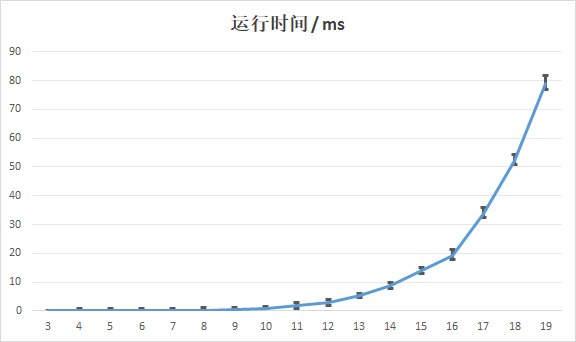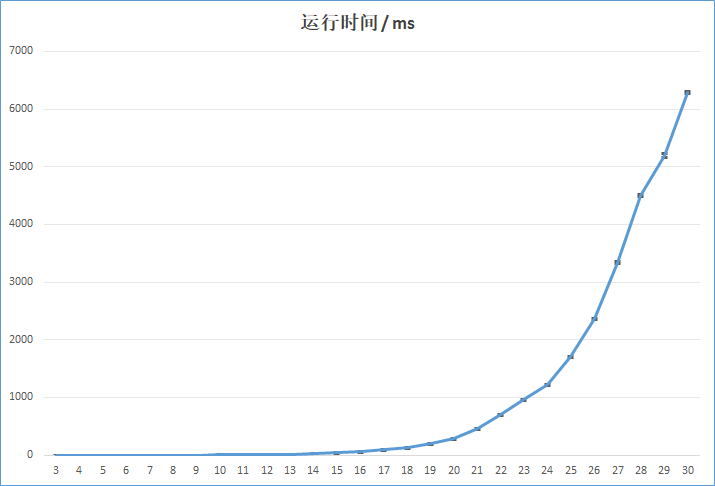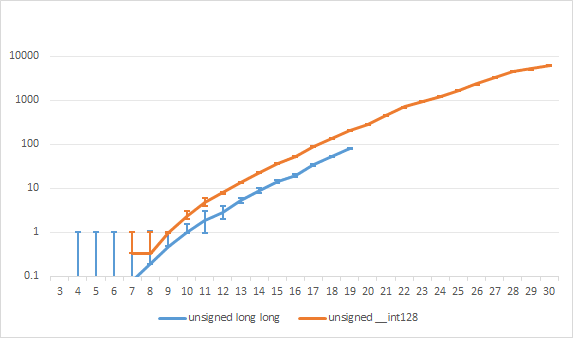外观
水仙花数超快算法
原理
枚举数字 i 出现的次数 ci,检查 i=1∑9inci 的数位是不是这样的模式。
时间复杂度 O(n9).
运行时间
f=2.6GHz 下,
unsigned long long 版本(T=30):

unsigned __int128 版本(T=3):

对数坐标对比:

代码
为了效率,写了像古神一样的代码。
调不动。根本调不动。
#pragma GCC optimize(2)
#pragma GCC optimize(3)
#pragma GCC optimize("Ofast")
#pragma GCC optimize("-ffast-math")
#pragma GCC optimize("unroll-loops")
#pragma GCC target("avx2")
#include <bits/stdc++.h>
using namespace std;
typedef unsigned __int128 ull;
// typedef unsigned long long ull;
typedef unsigned __int128 u128;
constexpr int maxn = 30;
int n;
int ncnt[10], scnt[10];
int rest[10]; // *已经*对数字i分配完成后,剩余未分配的位数
ull s[10]; // *已经*对数字i分配完成后的总立方和
u128 pown[10];
ull pow10[maxn + 1];
// pow10[x] = 10^x, pown[x] = x^n
ull m, M;
inline ull qpow(ull a, int b) {
ull ans = 1;
while (b) {
if (b & 1) ans *= a;
a *= a;
b >>= 1;
}
return ans;
}
unsigned char buf[maxn];
inline bool check(ull s) {
memset(scnt, 0, sizeof(scnt));
for (int i=1; i<=n; i++) {
ull r = s / 10,
d = s - ((r<<1) + (r<<3));
if (!s || ++scnt[d] > ncnt[d]) {
return false;
}
buf[i] = d;
s = r;
}
for (int i=n; i>=1; i--){
putchar(buf[i] + '0');
}
putchar('\n');
return true;
}
#define _lp0() for (ncnt[0]=0,rest[0]=n; rest[0]>=0; ncnt[0]++,rest[0]--)
#define _lp(x) for (ncnt[x]=0,rest[x]=rest[x-1],s[x]=s[x-1]; rest[x]>=0; ncnt[x]++,rest[x]--,s[x]+=pown[x])
#define _cutm(x) if (s[x]+rest[x]*pown[9] < m) break;
#define _cutM(x) if (s[x] > M) continue;
#define _rec(x, stmt) _lp(x) {_cutm(x);_cutM(x);stmt}
inline int hell_loop() {
int ans = 0;
_lp0(){
_cutm(0); _cutM(0);
_rec(1,_rec(2,_rec(3,_rec(4,_rec(5,_rec(6,_rec(7,_rec(8,{
ncnt[9] = rest[8];
ull ss = s[8]+ncnt[9]*pown[9];
ans += check(ss);
}))))))))
}
return ans;
}
inline int proc() {
pow10[0] = 1;
for (int i = 1; i <= n+1; i++) {
pow10[i] = pow10[i - 1] * 10;
}
for (int i = 0; i <= 9; i++) {
pown[i] = qpow(i, n);
}
m = pow10[n - 1];
M = pow10[n] - 1;
return hell_loop();
}
int main() {
freopen("in.txt", "r", stdin);
scanf("%d", &n);
printf("N = %d\n", n);
proc();
return 0;
}